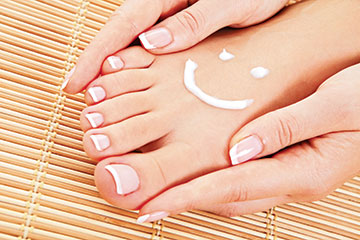By Barbara Grant
We don’t usually think too much about exercising our feet. In fact we probably don’t think about our feet much at all except for when they hurt! But did you know that caring for your feet including doing exercises that make them stronger and more flexible, can go a long way to increasing your mobility and independence, preventing falls and decreasing the wear and tear on your knees.
Our feet are much more than just 10 Little Piggys
In each foot and ankle we have 26 bones, 33 joints, over 100 muscles, ligaments and tendons and over 200,000 nerve endings. Each time we take a step, the nerve endings send messages to our brain to help us stay balanced and upright whether we are walking on a carpeted hallway, an icy road or a sandy beach. Because we tend to wear shoes a lot, and often avoid walking on irregular surfaces, the nerves in our feet don’t get much stimulation. When nerves are not regularly stimulated, they lose their ability to respond and ultimately can die off.
Active feet feel best
There are simple ways to keep your feet stimulated and increase blood flow and proprioception without having to walk on precarious roads or in bare feet!
- Include foot rubs and scrubs as part of regular #foot care. You can massage your own feet or rub the bottoms of them briskly to create friction and warmth.
- Wring your feet out with your hands as though each were a dishrag or play This Little Piggy with your toes.
- Roll a tennis ball or foot dowel back and forth under your foot while sitting or standing.
- Remember its important to undergo regular foot care to make sure callouses, corns and toenails are kept in check and to avoid the risk of painful skin conditions and infections.
Strong feet work best
When we think about having strong feet we actually mean strengthening the muscles in the feet and ankles. The muscles in your feet are what hold up your arches. Fallen arches not only impact balance and mobility, they can also contribute to foot, knee and low back pain. Strong, mobile ankles will make it easier to walk and balance. You need strong mobile feet and ankles to get up and down from chairs, beds and even off the floor or ground.
Feet and ankle strengthening exercises can be done seated in a chair or from standing. If you are standing, make sure you hold onto a chair, table or countertop to help maintain balance and avoid falls.
- While seated place a small wash cloth or towel under your foot and try to scrunch it up and place it down with your arches and toes. Then hold the towel in your toes and tap your foot.
- While seated tap your feet as though keeping time with music – or better yet put on some music and keep the beat! Combine this with rhythmic heel lifts. Alternate 20 toe taps with 20 heel lifts.
- While standing and being sure to hold on to a chair, table or counter do heel raises on two feet with straight knees. Then add a knee bend before the heel lift.
- Practice balancing on one leg being sure to hold on to a chair, table or counter. Turn your head to look right and then left.
- Wear toe separators while you are relaxing at home to keep the toes stretched. You can purchase inexpensive toe separators at the drug store or use the same type your manicurist uses.
Your feet are the foundation of your body.
The foundation of your house affects the integrity of the entire structure. A foundation that is cracked or sinking cannot adequately support the house and eventually walls, floors and window wells become unstable and start to shift. The same can be said for your feet. They are the foundation of your body’s strength and stability. The health and alignment of your feet can impact everything up the kinetic chain to your knees, hips, spine and posture. Stiff, inflexible feet and ankles contribute to hip discomfort and result in the knees having to bear much more weight than they should.
Like much of our thinking about health and activity, the reverse is often true. We don’t stop being active, walking, dancing, moving around because our feet get sore. Our feet get sore because we stop being active.
Foot strength, mobility and proprioception can be improved regardless of your age or level of fitness. As soon as those feet are happy, agile and strong, your level of fitness will increase. And with that you get increased health benefits that will greatly improve your quality of life.




